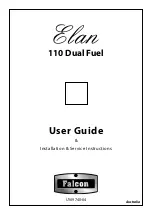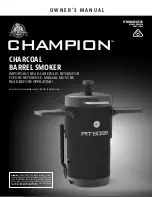
• To cook meat, use the operating mode hot air .
Tips on using the cookware
• Meat can be cooked in enamel coated cookware, tempered
glass (Pyrex) cookware, clay, or cast iron cookware.
• Stainless steel baking trays are less appropriate because they
re
fl
ect the heat.
• If the roast is covered, it will remain juicier, and the oven will
be less dirty.
• In an open baking tray, the roast will brown sooner.
Some notes on cooking meat
• The meat cooking table indicates recommended temperatures,
guide/shelf level, and cooking time. Since cooking times
depend strongly on the type, weight, and quality of meat, they
may have to be adjusted.
• Cooking meat, poultry, and
fi
sh in an oven is only economical
for weights exceeding 1 kg.
• When cooking meat, add enough liquid to prevent the fat and
juices from the meat to be burnt onto the baking tray. This
means that, in case of longer cooking times, the roast should
be checked upon every once in a while, and liquid should be
added.
• After approximately half the cooking time, turn the roast
around, especially when baking in a tray. For better results,
start the cooking with the upper side turned downwards.
• When cooking larger chunks of meat, condens may
accumulate on the oven door. This is a natural phenomenon
which does not affect the operation of the appliance. After
cooking, wipe the door and door glass dry.
• Insert a baking tray, which will serve as a drip tray in this case,
into the
fi
rst or second guide level to collect the dripping fat
and meat juices.
• In order to prevent accumulation of condens, do not let the
dishes cool down in the oven.
Cooking / roasting meat
49
















































